Of all the bold statements to make at a product launch, Scott pro racer and development rider Thomas Frischknecht pronouncing the death of 26″ wheels is right up there. As far as he is concerned, the wheel size that’s been a defining feature of mountain biking for the past 20 years has been weighed, measured and found wanting.
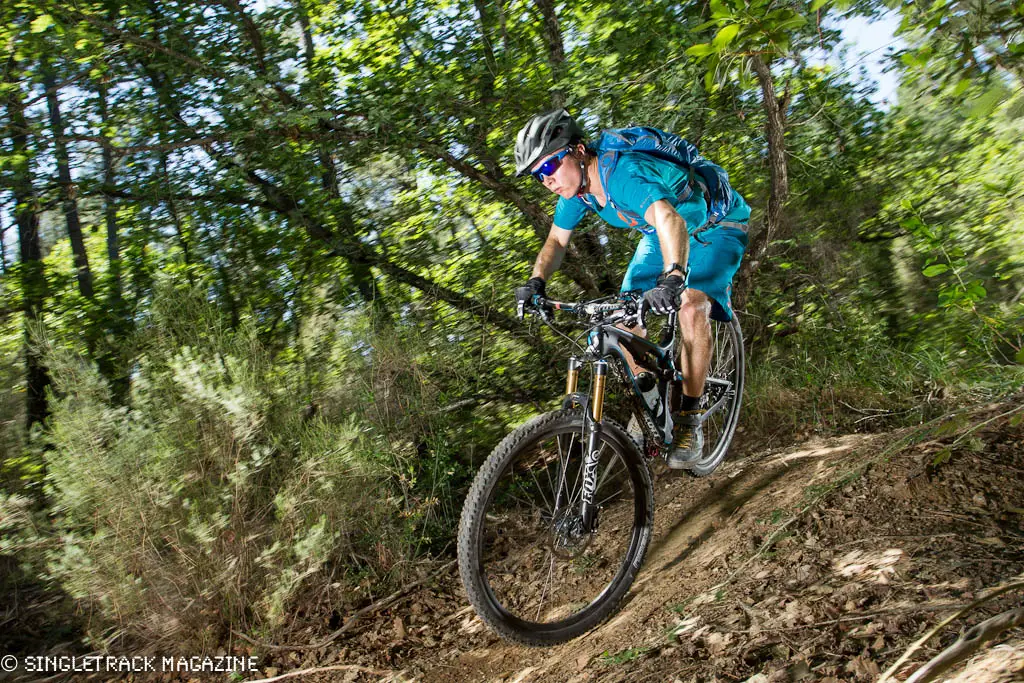
To give a little bit more background, the event was the Scott Bike launch of their new Genius model. After last year’s release of the XC and race orientated Spark (tested Singletrack Issue 71) with an all new frame design, it was on the cards that the longer travel Genius range would be due a refresh. It’s followed closely in the footsteps of the little brother.
Gone is the pull shock of old, replaced with a much more conventional push shock layout, which opens up shock choice, eases setup and gets it out of the way of filth. Everything else has been brought bang up to date too. The back end now uses a 142x12mm hub design, chunky Press-Fit 30 bottom bracket (with neat, removable ISCG-05 mount or chain guard), there’s a tapered headtube up front and both carbon and alloy models feature internal routing for a Rock Shox Reverb Stealth dropper post. It’s also much stiffer and also lighter than the previous Genius.
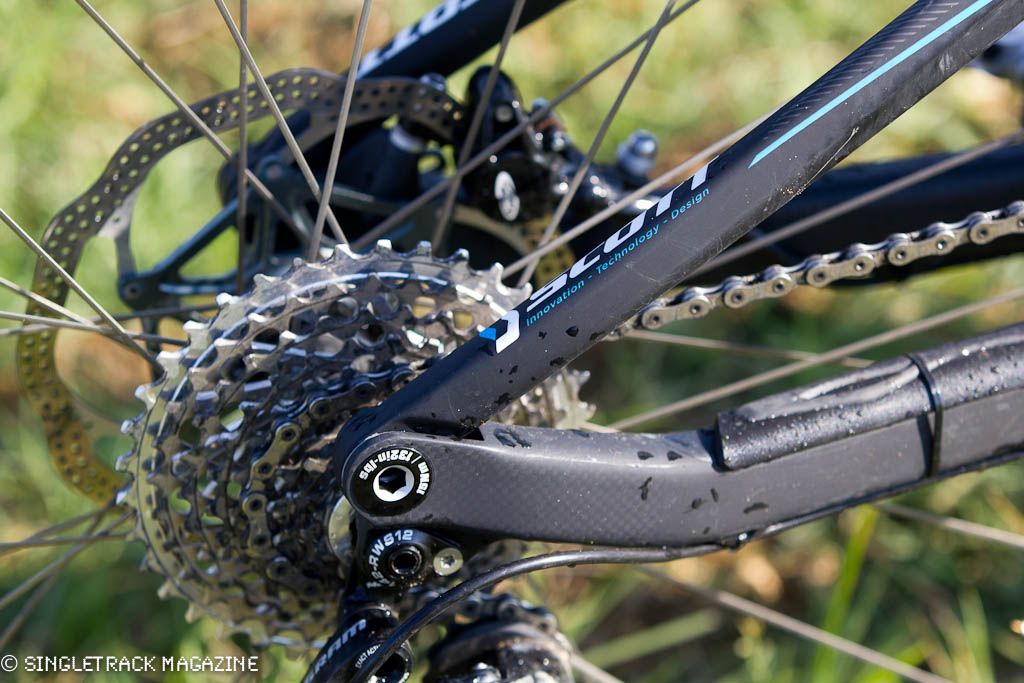
While so much work has gone on to create the third generation of Genius, it’s inevitable that focus will go back to wheel size. There is no 26″ wheeled Genius. Instead Scott have two lines; the Genius 900 which has 29″ wheels and 130mm of travel front and rear – and the Genius 700, with 150mm of travel and 650B wheels – or 27.5″ as Scott prefer to call the wheel size. It’s a bold move. These are the bikes that your average all round rider will be looking at.
It’s not been a decision they’ve just rushed into. They drew on the skills and experience of the Scott-Swisspower race team, testing prototype bikes with all three wheel sizes back to back. After lots of test riding and datalogging, they’d made their minds up.
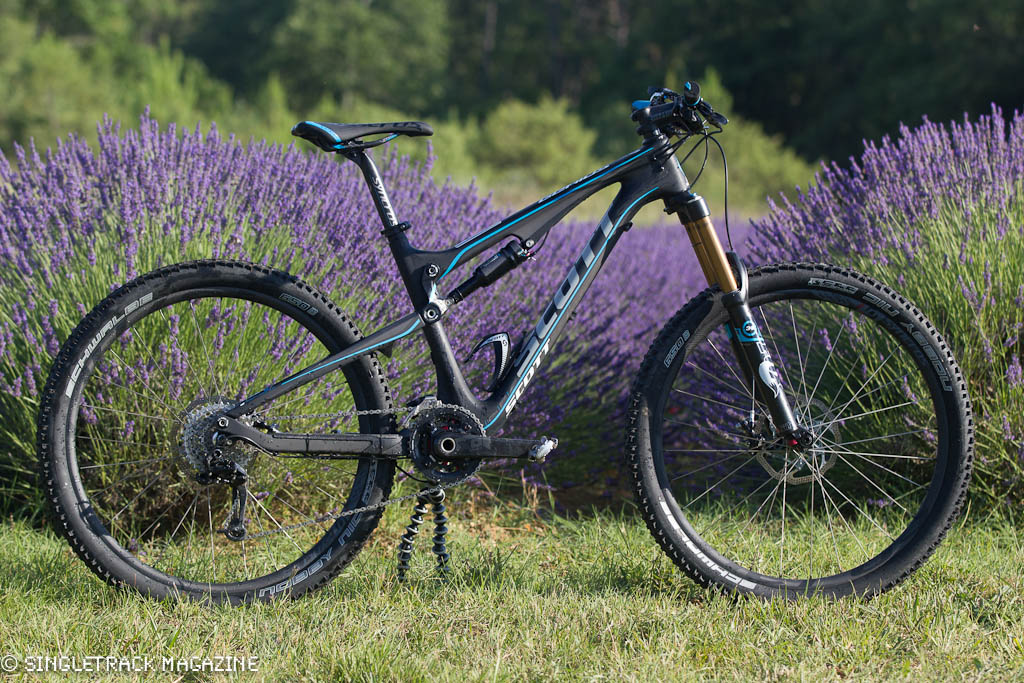
Frischy is certainly convinced: “My guys preferred the position of the 26 bikes but liked the advantage of 29… …I had to adapt [my riding style] to the 29 wheelsize, but from the very first metre on 27.5 I was convinced this was the future. I would sign this immediately: 26 is dead.”
There were graphs and charts aplenty to demonstrate the difference between all three wheel sizes, but the long and short of it is that Scott believe that 27.5″ provides most of the best balance of attributes from 26″ and 29″ without as many of the drawbacks. It’s the middle way.
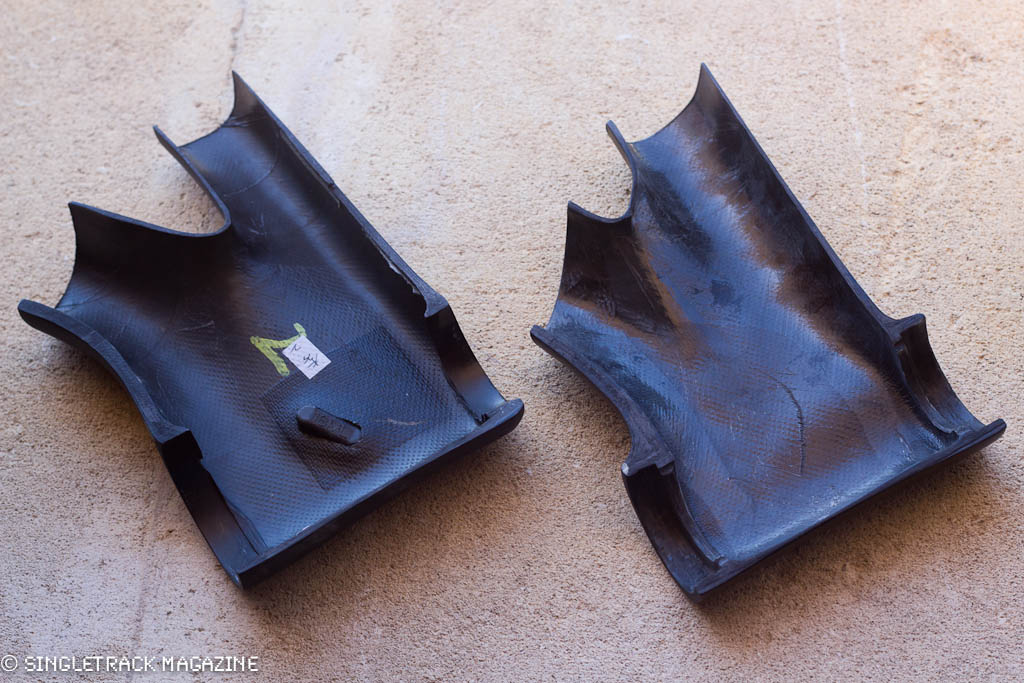
As ever, the top models are made from their HMX carbon fibre and constructed using their IMP technology. With this technology they’ve managed to keep alloy parts in the frame to a bare minimum, vastly reducing in-moulded parts over the old frame. Advances in moulding technology have also allowed them to directly mould headset bearing surfaces into the frame, resulting in a stronger and lower front end. The bearing spacing has gone up 20mm too, now using the same 15mm pivot bolt as seen on the Spark, which should ease finding spare parts. The seatpost is now a 31.6mm item to make it easier to find a dropper post and the alloy one piece upper shock linkage is a beautiful bit of work.
All this attention to detail means that both the top Genius 700 and 900 weigh exactly the same for a frame and shock at 2.3kg for a medium. The second down HMF carbon fibre model comes in at 200g heavier, while the aluminium frame version will weigh 250g more on top of that.
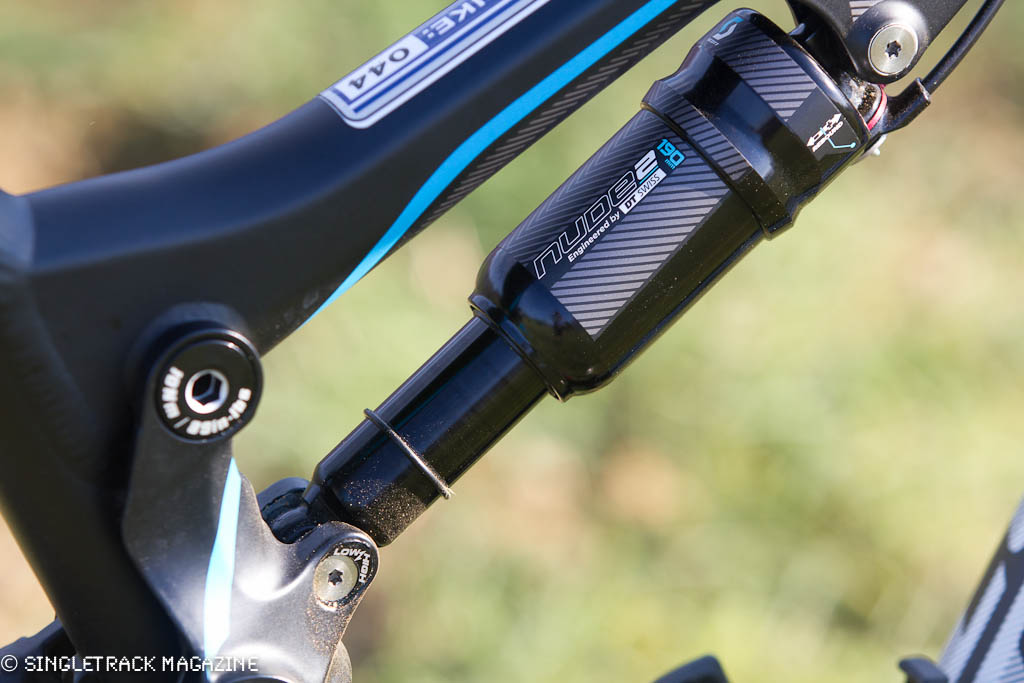
Scott are continuing their long term partnership with DT Swiss for their rear shocks, the top models using a redesigned Nude 2 Dual Air Spring shock with improved damping. The shock offers Lock, Traction and Descend modes, all adjustable via the 48g TwinLoc remote which also controls the Fox CTD front forks.
In the Descend mode, the shock opens two secondary air chambers, giving full travel and an active shock. In Traction, the air chamber is sealed off, reducing overall travel down to 90mm on the 29er and 100mm on the 27.5″ bike. This also adjust the geometry, making the bike sit up, keeping the BB higher and making the head angle steeper to give a sharper and more aggressive attitude to the bike.
Lower models do without the travel adjustment but do gain three position damping for this year thanks to the new DT Swiss M3 shock with LRD. The ‘Ride’ mode still offers all the travel but with increased low speed compression damping to aid pedalling performance.
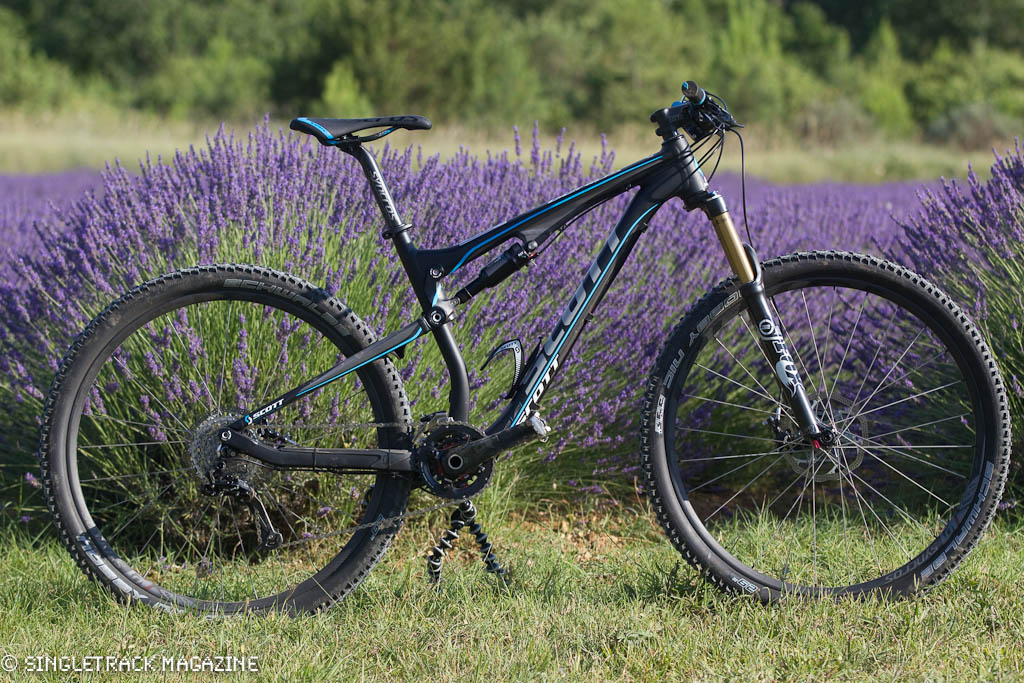
The Ride – Scott Genius 900
I took my first spin out on the big wheeled Genius on the tight, twisty and quite deliciously dry trails around Frigoulet. To get some idea of the terrain, think Thetford but perma-dry, with narrow gaps between trees to dart though and mini berms and rollers littering the trail. Keeping momentum required constant effort to move the bike around and positively encouraged hard effort constantly – basically perfect ground for testing a lightweight trail bike.
As the chain gang pace upped – possibly the sheer low mass of the bike encouraging that sort of behaviour – it was quite instantly obvious that the focus of the 900 is for devouring ground at speed. The geometry is long and while the offset seat tube is not as steeply canted as previous Genii thanks to the redesign, the top tube of the bike does ‘grow’ considerably as the seat goes up. It’s a sharp handling bike, the 69° head angle keeping it lively up front, the 450mm chainstays helping with the back end.
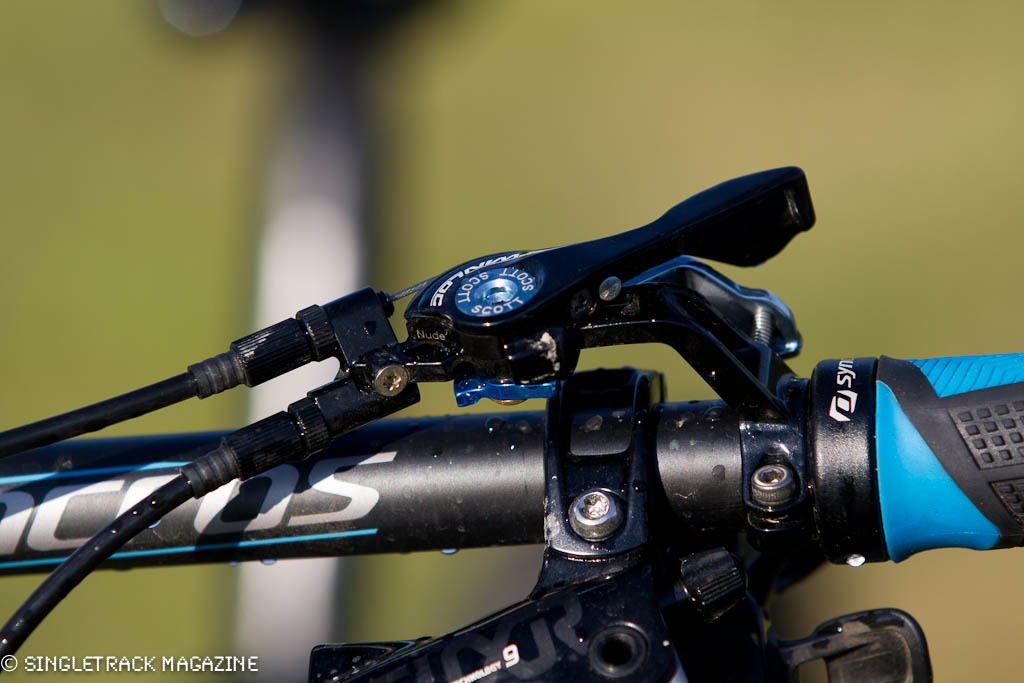
The Twinloc system is remarkably easy to use once you remember it’s there, the Traction mode helping noticeable on offroad climbs and pedally sections. In Descent mode, the shock happily gets into the travel to eat up trail obstacles with a minimum of feedback. I found myself riding everything but flat out, plough-a-line-down-it descents in Traction, the sharper and livelier feel from the back and propped up angles aiding scalpel-sharp changes of direction. For that sort of riding, this is a dangerous bike. The acceleration you can produce is addictive and for distance crunching it’s really very effective. It’s the sort of bike that would leave you stranded far away from home, bonking hideously and still with a grin showing through the grimace.
That’s not to say it’s an out-and-out XC bike, far from it. With the saddle right down, the bike does have a more playful character and although it required plenty of movement to hustle it through the tighter sections, the grip is exceptional. It’s a shame the bike doesn’t come with a dropper post fitted as standard, which would let you access this side of it’s character a little more frequently – well, that and wider bars than the fitted 700mm items, but then you knew we’d say that.
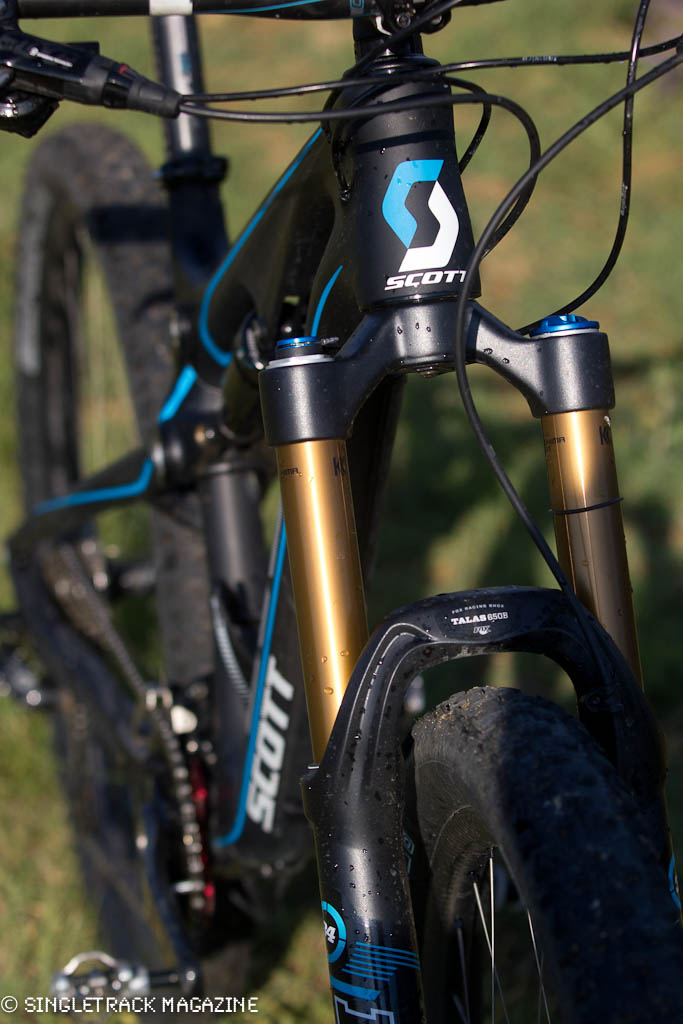
The Ride – Scott Genius 700
Having spent all the previous day on the big wheeled bike, this was my first proper introduction to the middle way of 27.5″. That fact, along with the extra 20mm travel at either end and a set of Fox 34 fork rather than the 32s on the Genius 900, meant it was no surprise to find that this bike handled markedly differently. While the cockpit spacing felt extremely familiar to the the other bike, as soon as the first pedal stroke was done, it revealed a totally different character.
The slightly slacker 68° head angle helps, but the 700 has a much more relaxed feel. To get genre heavy, it’s more of an ‘all-mountain’ trail bike than a ‘cross country’ trail bike. There’s definitely less rotating mass to be moving about but there’s much less of the darting from line to line, the bike sitting into corners smoothly. Less scalpel, more switchblade – just as sharp, just a bit more handy when it gets rough. The bike is around 20mm shorter in overall wheelbase and this does translate into a more nimble feel on tight turns and in rougher terrain, feeling more more open to changing direction; chopping, hopping and twitching around obstacles rather than steaming through.
There felt like there was a noticeable increase in grip over a 26″ tyre – although you can definitely feel that there’s a bit more weight in the wheel too. On the flip side there was a lower amount of grip than the 29er, especially over sections of dry roots; where the big wheels had happily carved a straight line the smaller wheels shimmied about.
In fact, that was pretty much the whole feeling of 27.5″ wheels. Yes, they’re not as nimble as 26″ but they are more grippy. They’re also moveable than 29″ and – I suspect this could be a major factor in the push for 27.5″ in some applications – you can also run them with longer travel forks.
Unsurprisingly, the middle wheel size is well, in the middle. I can’t say I felt that it was the future the moment I hopped aboard – it was just different. Whether it’s for you will probably depends on which aspects of handling and bike feel you value over others, though I do suspect that the Genius 700 may well tempt a good numbers of riders who’ve never had any interest in 29ers to try and benefits of bigger wheels and may draw 29er riders to dabble with longer travel.
Both the Genius bikes are exceptionally well made, designed and capable trail bikes. You’ll just have to pick which one will suit you and your riding best.
All that said, hopefully we’ll be getting one for a more extended and in-depth test on our local trails as soon as possible. Scott say all the bikes will be available after Eurobike at the start of September. We’re working on finding guide prices out and we’ll have them with you as soon as possible…
This content is exclusive for Premier users.
If you are a Subscriber log in.
Subscriptions start from just £1.99





You may have noticed that all the comments are gone – that’s because our server ate the original story without a please or thankyou.
We’re going to have a rummage inside its bowels to see if we can bring it back to life, but in the meantime, feel free to comment here…